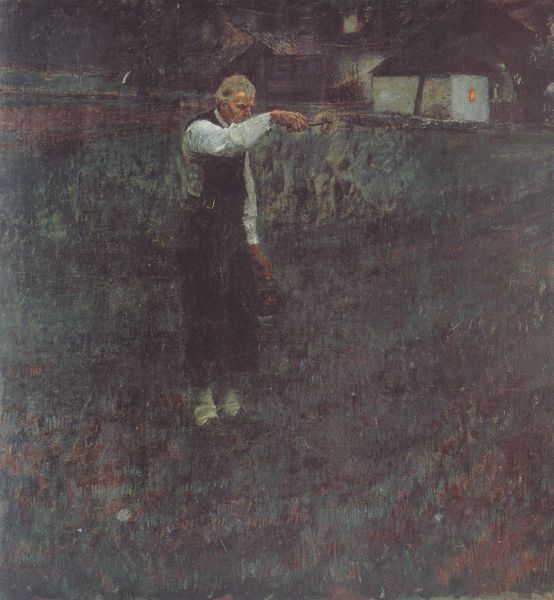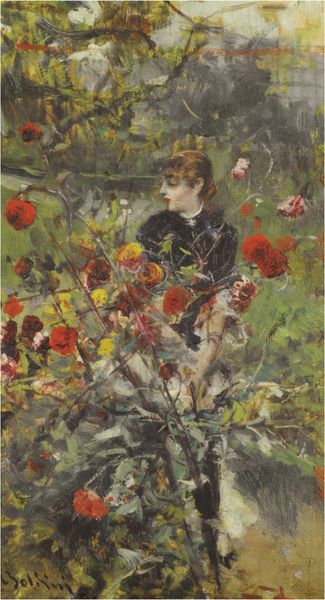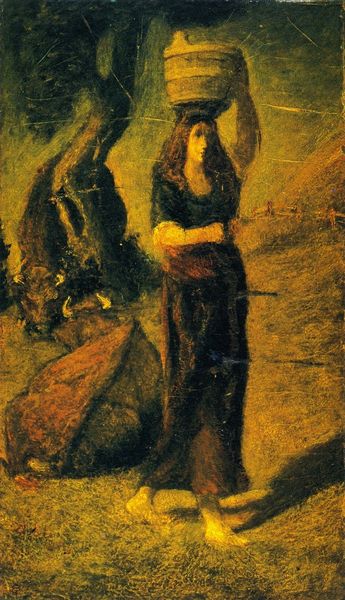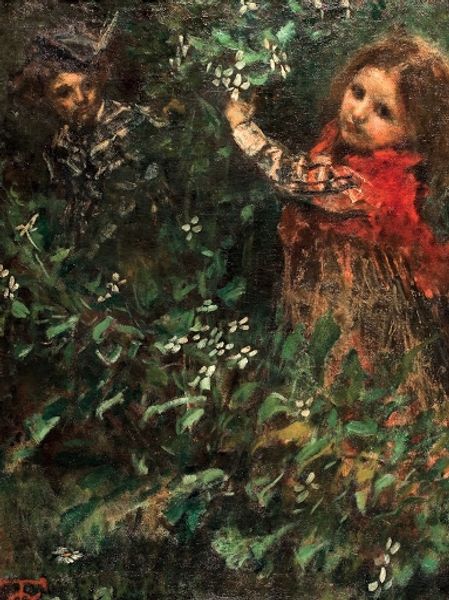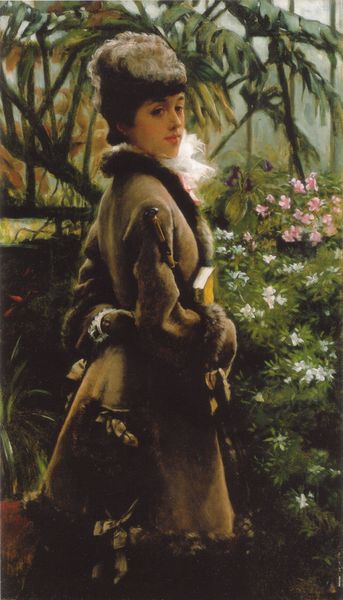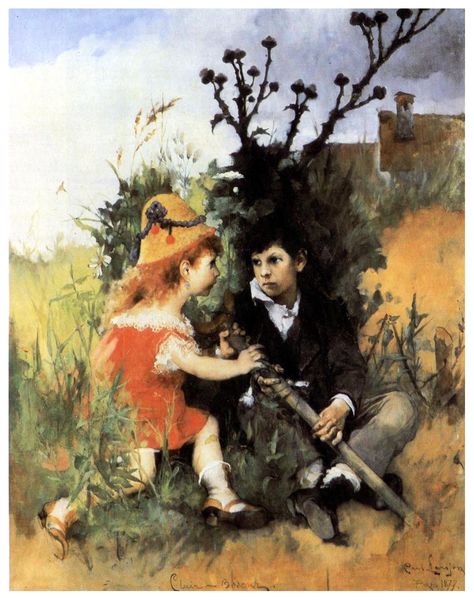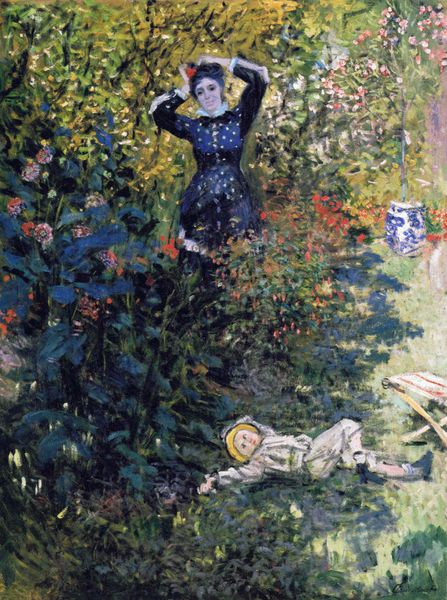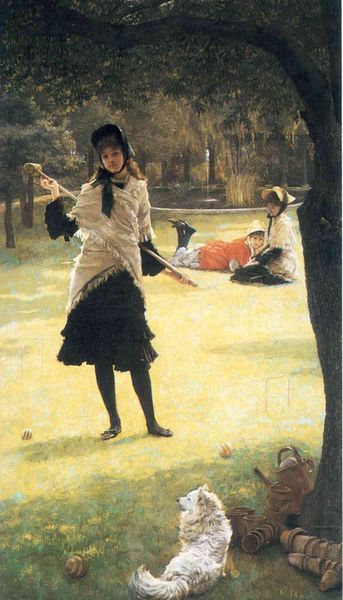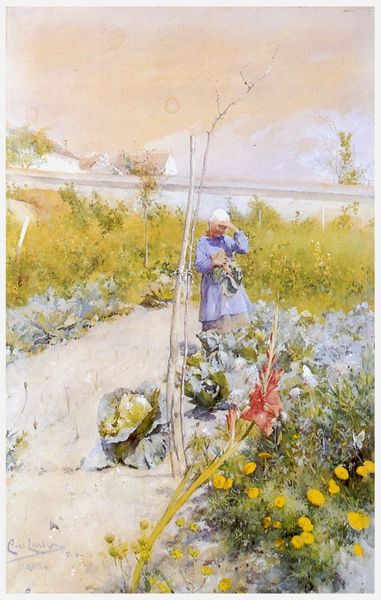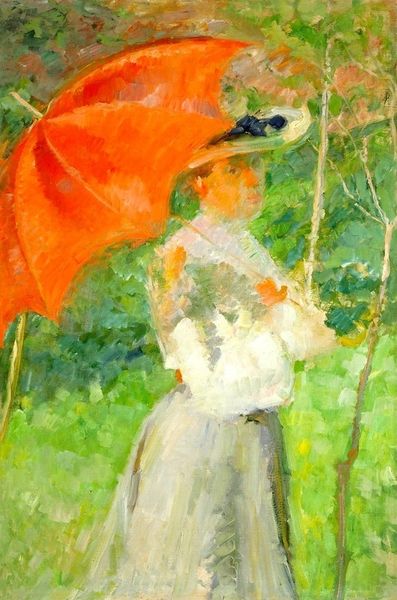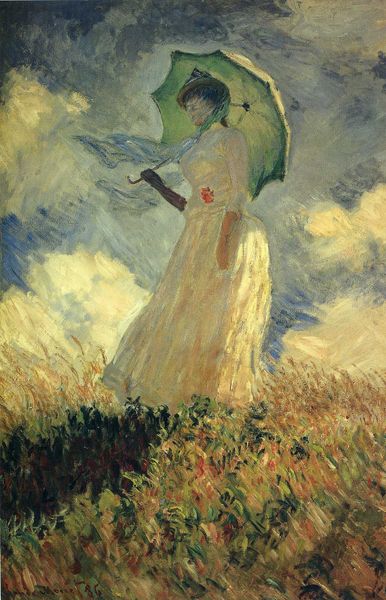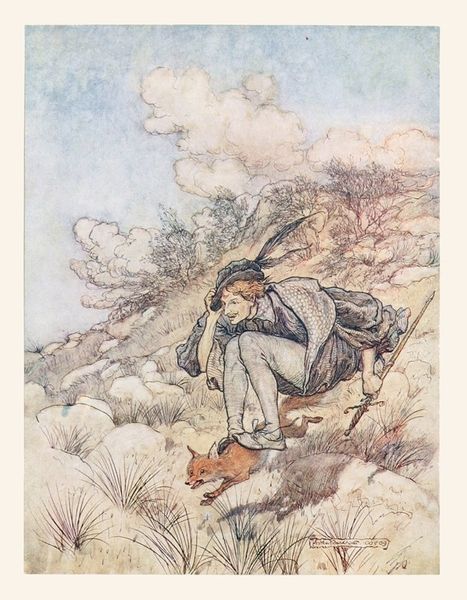
painting, oil-paint
#
portrait
#
narrative-art
#
painting
#
oil-paint
#
landscape
#
figuration
#
oil painting
#
romanticism
#
history-painting
#
pre-raphaelites
#
portrait art
Dimensions: 50.8 x 64.8 cm
Copyright: Public domain
Editor: This is "Ferdinand Lured by Ariel," an oil painting from 1850 by John Everett Millais. The figure of Ferdinand seems startled, with his hands up to his ears. What strikes me is how the ethereal, green-tinged figures contrast with his very solid, almost earthy presence. What do you see in this piece? Curator: Well, the interesting point to start with is its context within Pre-Raphaelite painting. This artistic movement consciously rejected the perceived artifice of art following the Renaissance and aimed for a return to the detail, intense colours and complex compositions of Quattrocento Italian art and Flemish art. Their engagement with literary themes also highlights the public role of art. Notice how the composition places Ferdinand, the ‘hero’, slightly off-center, almost subjugated by the pervasive nature around him. Does this shift in focus represent the anxieties and changes in Victorian society? Editor: So you’re saying it’s more than just a scene from Shakespeare’s 'The Tempest?' Curator: Absolutely. The painting can also be seen as a commentary on the Victorian perception of nature. The dense foliage is not merely a backdrop; it almost suffocates Ferdinand, questioning man's dominance over the natural world which at the time was heavily disrupted by urban development and industrialization. Millais’ use of precise detail challenges conventional hierarchy between subject and background. What’s also important is how this kind of image can reflect and perpetuate specific visions of social and environmental dynamics of the time. Do you notice how Ariel’s ‘lure’ implies not just a sonic experience but a powerful and ambiguous socio-political force? Editor: That makes a lot of sense. So, the painting is participating in the broader Victorian discourse surrounding humanity's relationship with nature and art's societal role. I never thought of it that way! Curator: Exactly! These paintings aren't just illustrations, but social and cultural documents. Editor: I will definitely think more critically about art’s social impact going forward. Curator: And that’s how we begin to truly appreciate art history.
Comments
No comments
Be the first to comment and join the conversation on the ultimate creative platform.

